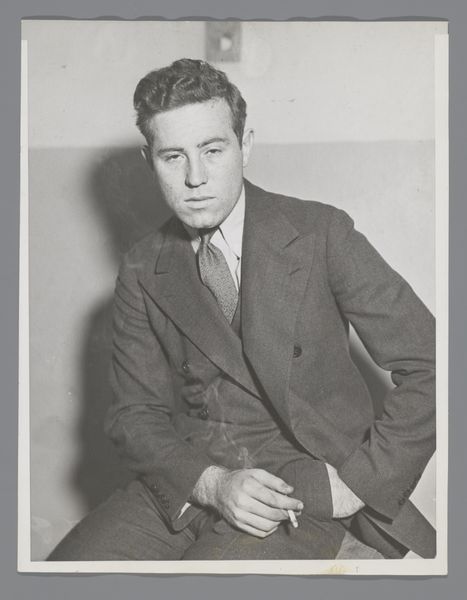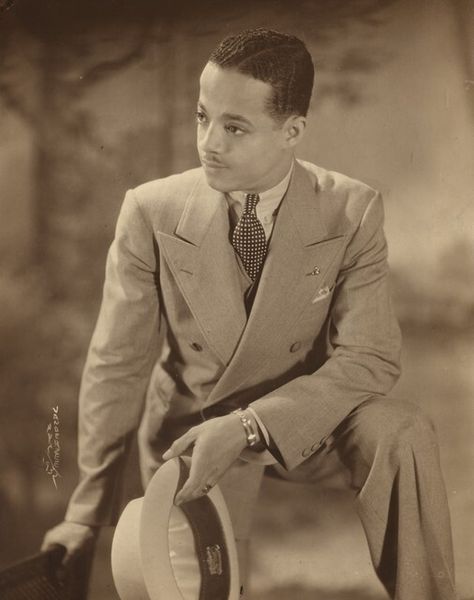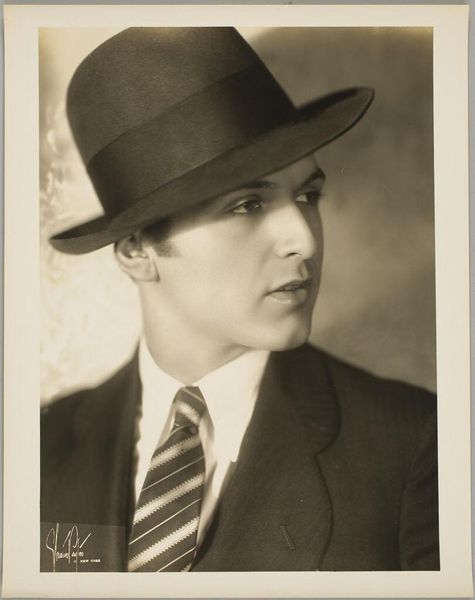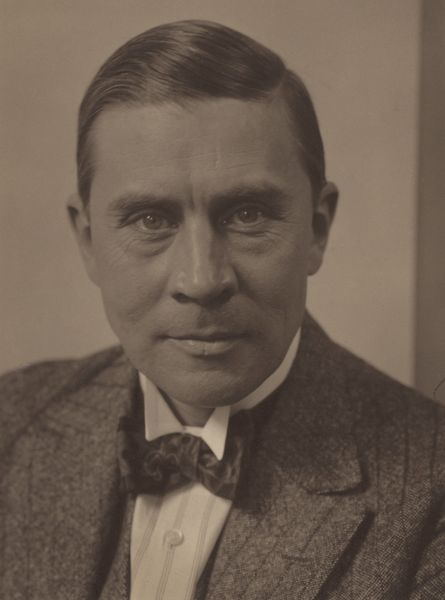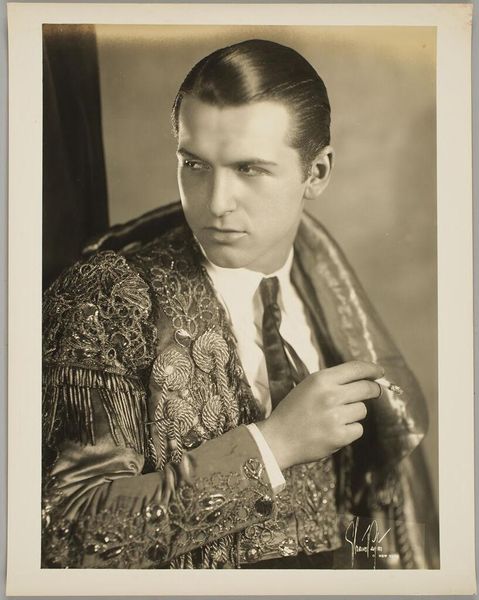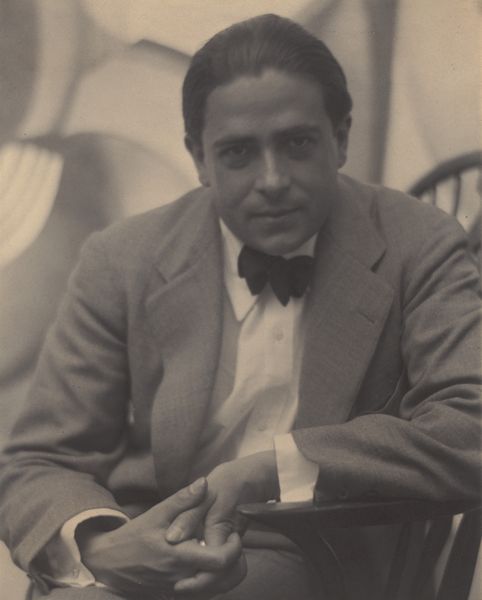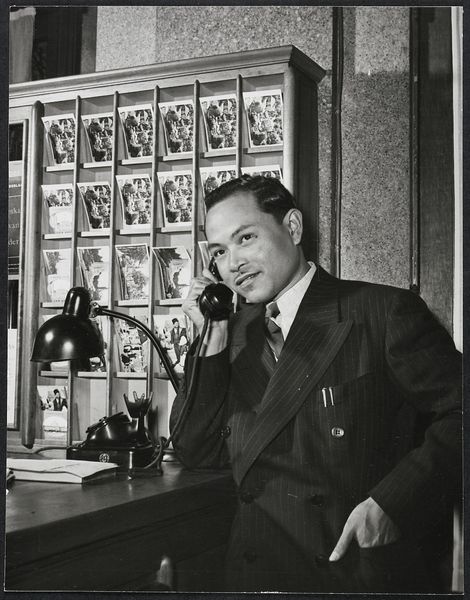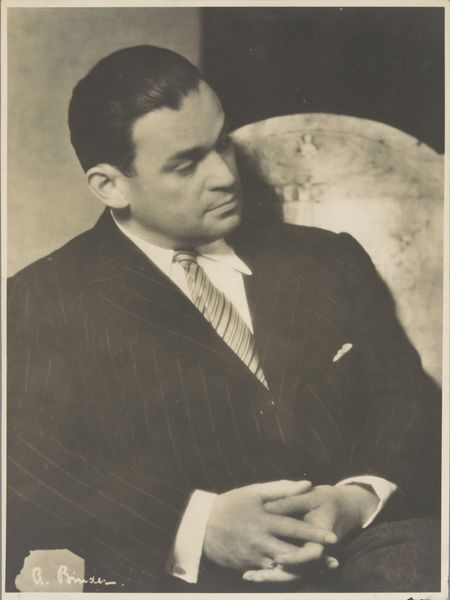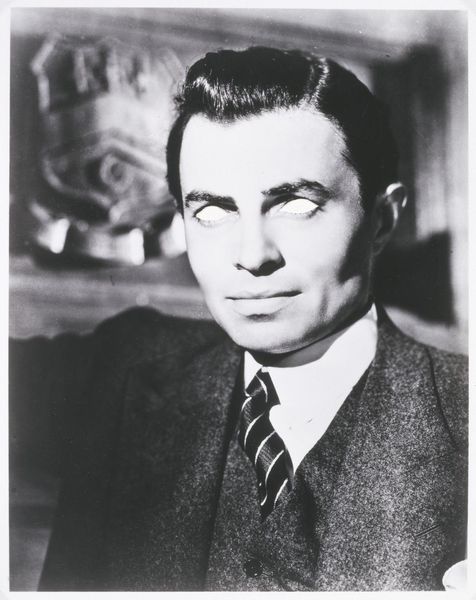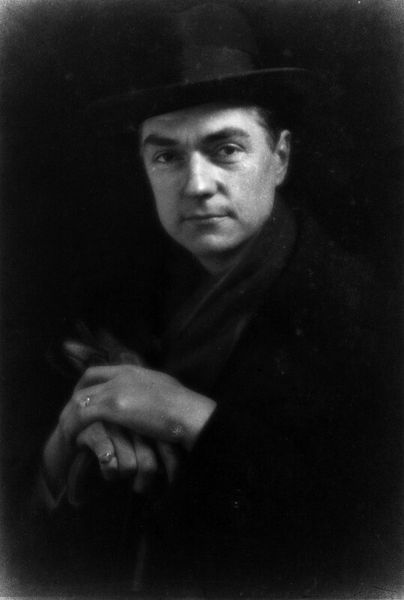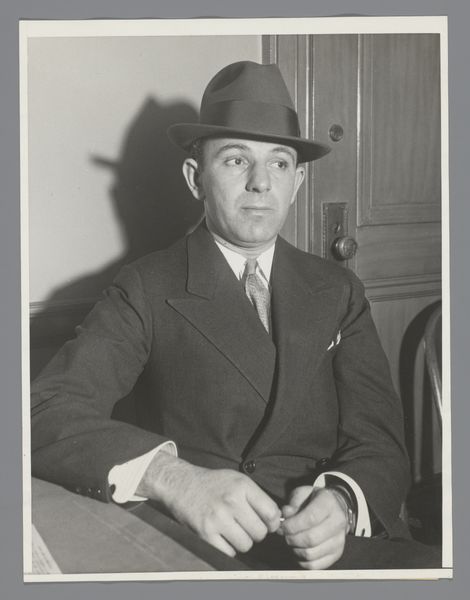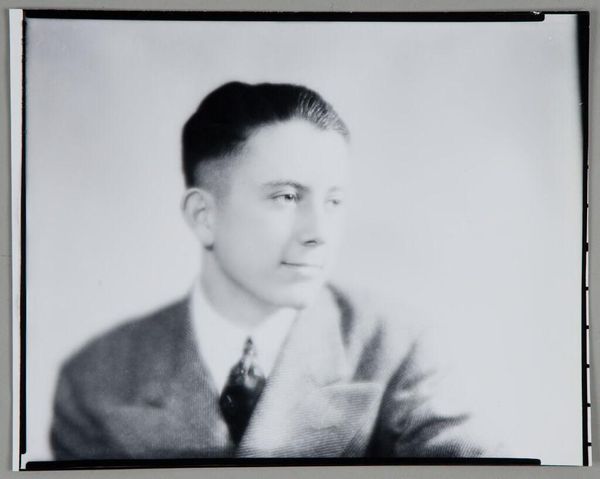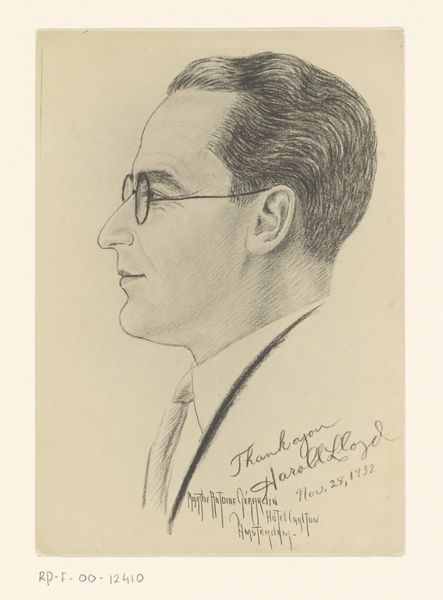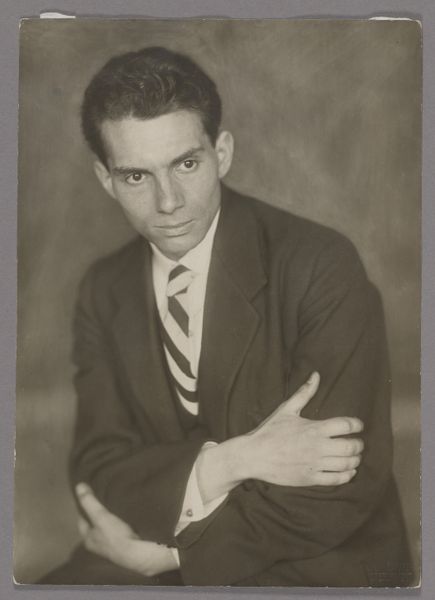
#
black and white photography
#
head
#
low key portrait
#
portrait image
#
portrait
#
portrait subject
#
black and white format
#
black and white theme
#
portrait reference
#
black and white
#
single portrait
#
forehead
Copyright: Public domain
Editor: Here we have Adolph de Meyer’s 1921 black and white photographic portrait of Charlie Chaplin. He seems very pensive. What's your take on this piece, given its historical context? Curator: It’s interesting how De Meyer, known for his soft-focus style, captures Chaplin, a global icon, in this contemplative pose. Early 20th-century portraiture served not only to record likenesses but to elevate the subject's status. Considering the period, right after the First World War and amidst rising social anxieties, what does Chaplin's solemnity signify to you? Editor: Maybe it suggests a shared feeling of unease or reflection after such a large scale tragic event? How much influence did the elite studios hold on deciding which images should be seen by the public and immortalized? Curator: Absolutely. Studios, especially in early Hollywood, wielded significant power, controlling image production and dissemination. They shaped public perception and reinforced certain narratives. This portrait, in its understated elegance, presents Chaplin not just as a comedian, but as an artist deeply engaged with the human condition. The composition steers away from caricature towards a very dignified persona. Do you think that deviates from the audience's perception of Chaplin, or is it coherent with the development of his public persona? Editor: It feels like it’s consciously trying to solidify his image as more than just a comedian. It makes you think about the man behind the character. It sounds like a deliberate act of image crafting, possibly pushed by the Studios to appeal to a broader demographic and maybe secure higher cultural recognition, don’t you think? Curator: Precisely! The photograph can be viewed as an intentional branding move, a way to legitimize cinema and its stars within established social and cultural hierarchies. Examining the image through this lens reveals the intricate power dynamics at play in the creation and consumption of celebrity images. Editor: I never considered the social hierarchies implied in these kinds of portraits before. It really provides a deeper perspective on the purpose of it. Thanks! Curator: Indeed! Seeing art as a reflection of social dynamics offers profound insights.
Comments
No comments
Be the first to comment and join the conversation on the ultimate creative platform.
